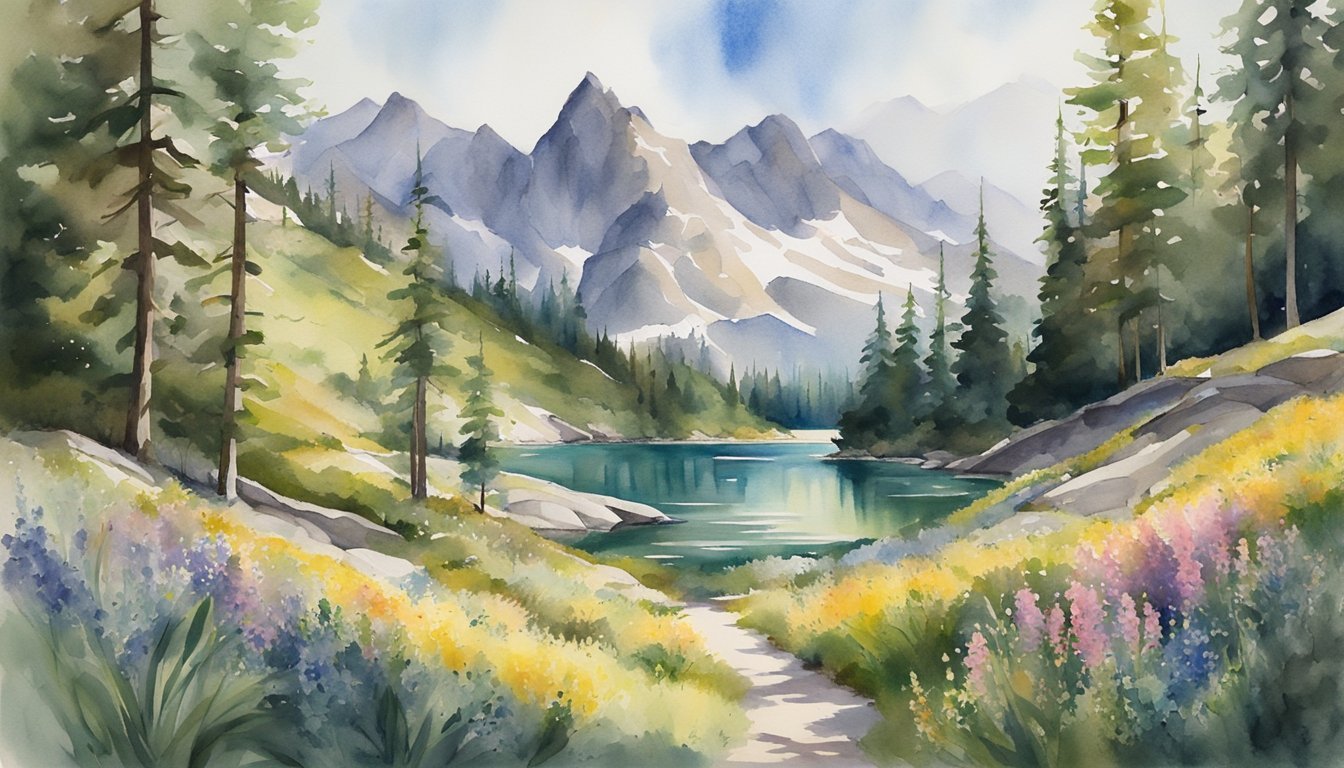Understanding Mountains
Formation and Types
Mountains are fascinating landforms capable of capturing our imaginations with their breathtaking beauty and stature. These elevated portions of the Earth’s crust are known for their steep sides that show significant exposed bedrock. There are primarily four types of mountains: volcanic, fold, block, and dome mountains1.
Volcanic mountains form from magma pushing up from the Earth’s mantle through the continental crust. Shield volcanoes, which have gentle slopes, and more explosive stratovolcanoes are examples of volcanic mountains2.
Fold mountains are a result of tectonic plate movement and the Earth’s crust folding through compressional forces. Anticlines and synclines, formed when rocks are bent upwards and downwards respectively, contribute to these mountains3.
Block mountains, or fault-block mountains, occur due to faults in the Earth’s crust. As tectonic plates move, large blocks of the crust can be raised or lowered, forming mountains. Horsts are a type of block mountain formed when regions of the crust are elevated between two parallel faults4.
Finally, dome mountains are created by the slow upward movement of magma. Instead of erupting like in volcanic mountains, the molten rock below pushes the Earth’s surface, forming a dome shape5.
Geography and Distribution
Mountains cover about 22% of Earth’s land surface and are found on all continents6. They can occur individually or as part of a larger mountain range. Some well-known mountain ranges include the Himalayas in Asia, the Andes in South America, and the Rocky Mountains in North America.
The height of mountains can vary significantly, with the tallest peak on Earth being Mount Everest at 29,035 feet (8,850 meters)7. However, the tallest mountain measured from top to bottom is Mauna Kea, an inactive volcano on the island of Hawaii, standing over 33,000 feet (10,000 meters) tall when measured from its base on the ocean floor8.
Mountains not only provide habitats for various plant and animal species, but they also influence climate and play a vital role in water systems. Mountain ranges can act as barriers affecting the distribution of precipitation, causing one side of the range to receive more rainfall while creating a rain shadow on the other side9.
In conclusion, understanding mountains and their formation helps us appreciate the intricate processes that shape the Earth’s surface. These majestic landforms not only offer breathtaking views but also provide critical resources and habitats for countless species.
Exploring Mountain Environments

Climate and Ecosystem
Mountains are fascinating geological formations with diverse climates and ecosystems that change with altitude. In general, the climate in mountainous areas tends to be harsher with increasing elevation, often transitioning from lush forests at lower altitudes to treeless alpine vegetation in the summit area.
Well-known mountain ranges such as the Karakoram experience extreme weather conditions due to their high elevations and proximity to large-scale weather systems. These environments serve as home to a wide range of animals and plants, many of which have adapted to thrive in challenging conditions. In fact, mountain environments are key to biodiversity, with more than 85% of the world’s amphibian, bird, and mammal species found in these areas.
Some notable examples of mountains with unique ecosystems include Mount Fuji in Japan, Mauna Kea in Hawaii, and Mount Pinatubo in the Philippines – the latter being an active stratovolcano.
Human Interaction and Challenges
Human activities have long been intertwined with mountain environments, from rivers and glaciers that provide water sources to the rich minerals found within the mountains’ geological structure. However, the interaction between humans and these environments often results in challenges, such as erosion on steep slopes and the impact on mountain ecosystems due to climate change.
Some mountain ranges, like the Sierra Nevada and Navajo Mountain, are particularly valuable for their water resources and have become the focus of conservation efforts. In addition to climate change, other threats faced by mountain environments include human activities like mining, deforestation, and urban development, all of which contribute to changes in the local relief and landscapes.
In conclusion, exploring mountain environments offers insight into the incredible diversity of Earth’s natural systems, revealing the beauty and complexity of these awe-inspiring landscapes. As humanity continues to interact with these environments, we must find ways to preserve and protect them for future generations.

